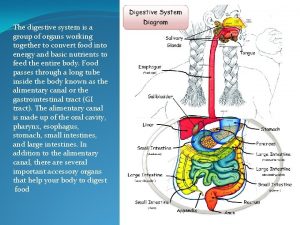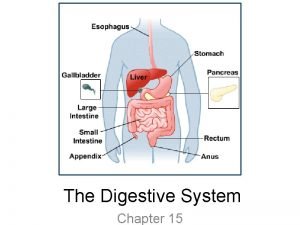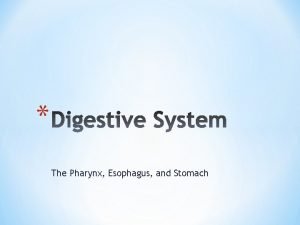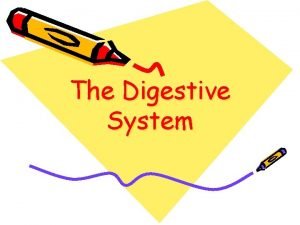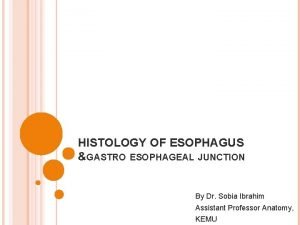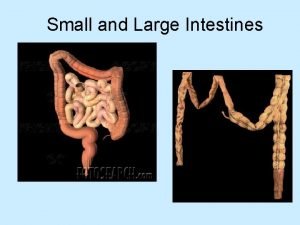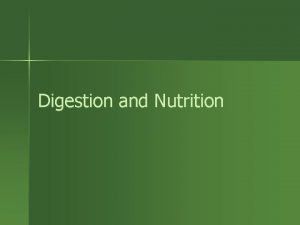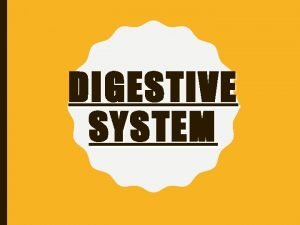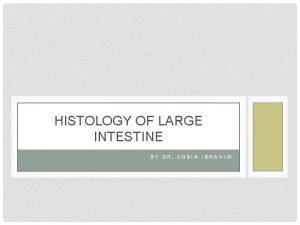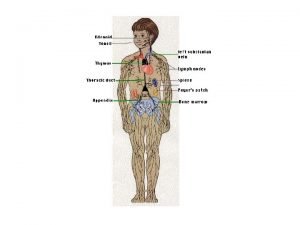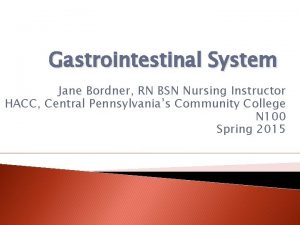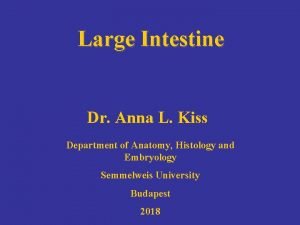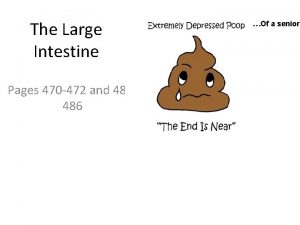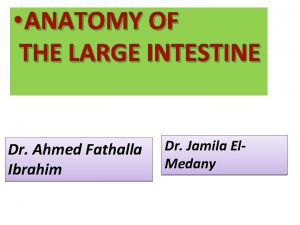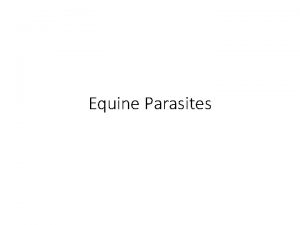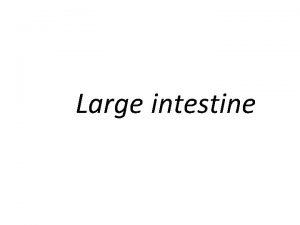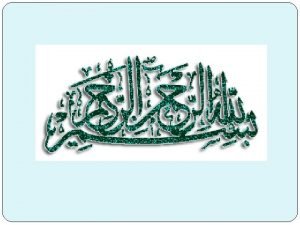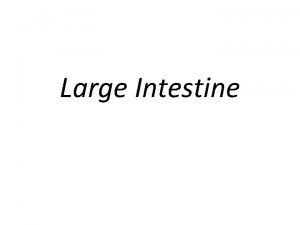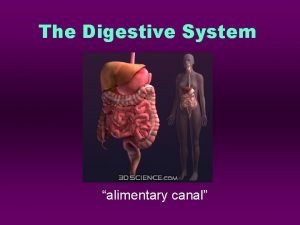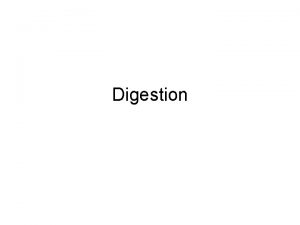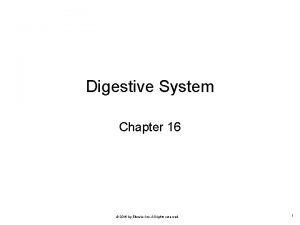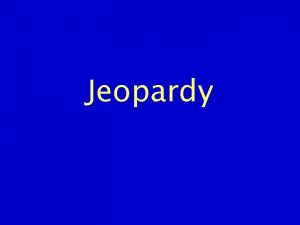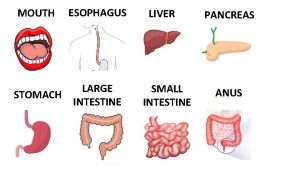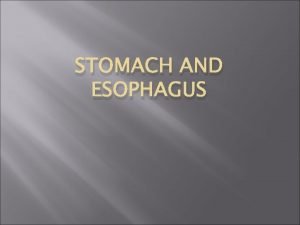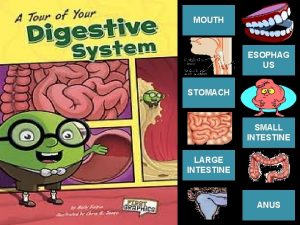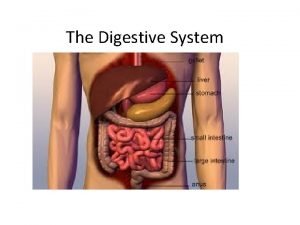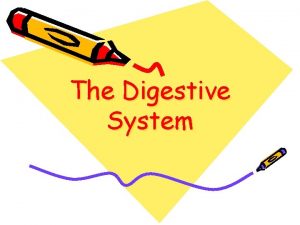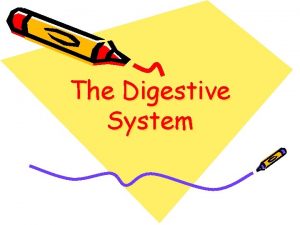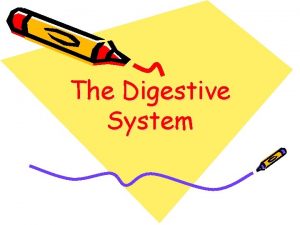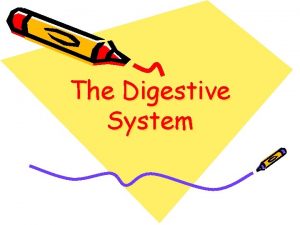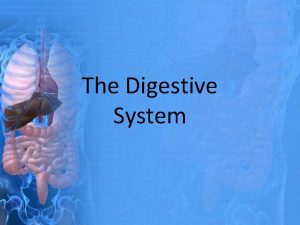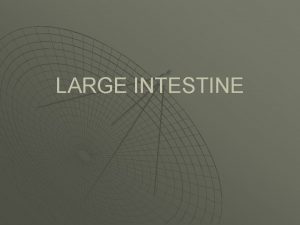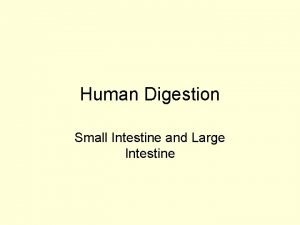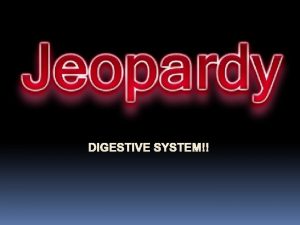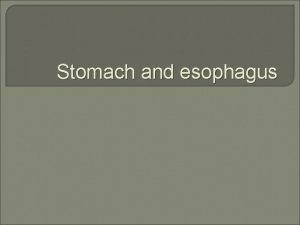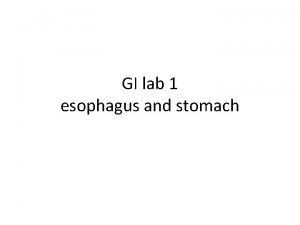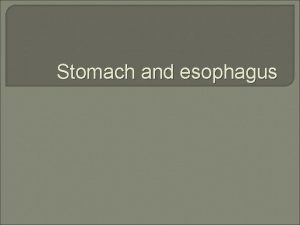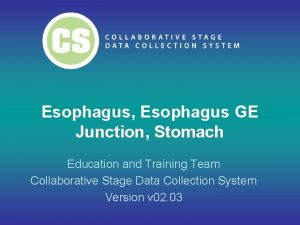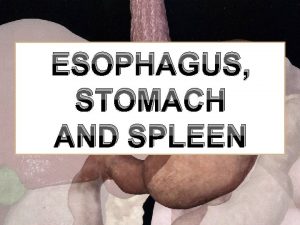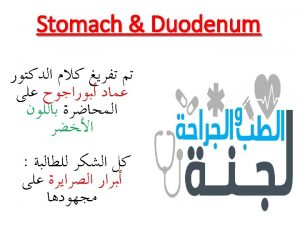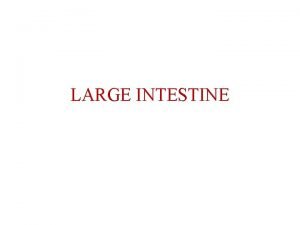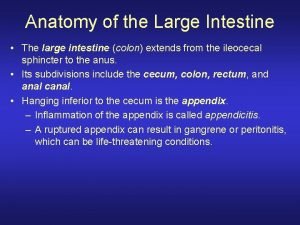Oral cavity Esophagus Stomach Small intestine Large intestine



























- Slides: 27

Oral cavity Esophagus Stomach Small intestine Large intestine Rectum (i) Digestive System Breaks food down into absorbable nutrients that enter the blood for distribution to body cells; indigestible foodstuffs are eliminated as feces. © 2018 Pearson Education, Inc. 1

Pyloric sphincter Gastric pits Surface epithelium Gastric gland Mucous neck cells Parietal cells Gastric glands Chief cells (c) © 2018 Pearson Education, Inc. 2

Pepsinogen HCl Pepsin Parietal cells Chief cells (d) © 2018 Pearson Education, Inc. Enteroendocrine cell 3

Smooth muscle cell Atoms 1 Chemical level Molecules Atoms combine to form molecules. 2 Cellular level Cells are made up of molecules. Blood vessels 3 Tissue level Tissues consist of similar types of cells. Smooth muscle tissue Heart Cardio– vascular system 6 Organismal level Human organisms are made up of many organ systems. © 2018 Pearson Education, Inc. 5 Organ system level Organ systems consist of different organs that work together closely. Epithelial tissue Smooth muscle Blood tissue vessel (organ) Connective tissue 4 Organ level Organs are made up of different types of tissues. 4

Hair Skin Fingernails (a) Integumentary System Forms the external body covering; protects deeper tissue from injury; synthesizes vitamin D; location of sensory receptors (pain, pressure, etc. ) and sweat and oil glands. © 2018 Pearson Education, Inc. 5

Cartilages Joint Bones (b) Skeletal System Protects and supports body organs; provides a framework the muscles use to cause movement; blood cells are formed within bones; stores minerals. © 2018 Pearson Education, Inc. 6

Skeletal muscles (c) Muscular System Allows manipulation of the environment, locomotion, and facial expression; maintains posture; produces heat. © 2018 Pearson Education, Inc. 7

Brain Sensory receptor Spinal cord Nerves (d) Nervous System Fast-acting control system of the body; responds to internal and external changes by activating appropriate muscles and glands. © 2018 Pearson Education, Inc. 8

Pineal gland Pituitary gland Thyroid gland (parathyroid glands on posterior aspect) Thymus gland Adrenal glands Pancreas Testis (male) Ovary (female) (e) Endocrine System © 2018 Pearson Education, Inc. Glands secrete hormones that regulate processes such as growth, reproduction, and nutrient use by body cells. 9

Heart Blood vessels (f) Cardiovascular System Blood vessels transport blood, which carries oxygen, nutrients, hormones, carbon dioxide, wastes, etc. ; the heart pumps blood. © 2018 Pearson Education, Inc. 10

Lymph nodes Lymphatic vessels (g) Lymphatic System Picks up fluid leaked from blood vessels and returns it to blood; disposes of debris in the lymphatic stream; houses white blood cells involved in immunity. © 2018 Pearson Education, Inc. 11

Nasal cavity Pharynx Larynx Trachea Bronchi Lungs (h) Respiratory System Keeps blood constantly supplied with oxygen and removes carbon dioxide; the gaseous exchanges occur through the walls of the air sacs of the lungs. © 2018 Pearson Education, Inc. 12

Oral cavity Esophagus Stomach Small intestine Large intestine Rectum (i) Digestive System Breaks food down into absorbable nutrients that enter the blood for distribution to body cells; indigestible foodstuffs are eliminated as feces. © 2018 Pearson Education, Inc. 13

Kidney Ureter Urinary bladder Urethra (j) Urinary System Eliminates nitrogen-containing wastes from the body; regulates water, electrolyte, and acid-base balance of the blood. © 2018 Pearson Education, Inc. 14

Seminal vesicles Prostate gland Mammary glands (in breasts) Uterine tube Ovary Uterus Penis Testis Scrotum (k) Male Reproductive System Vagina (l) Female Reproductive System Overall function of the reproductive system is production of offspring. Testes produce sperm and male sex hormone; ducts and glands aid in delivery of viable sperm to the female reproductive tract. Ovaries produce eggs and female sex hormones; remaining structures serve as sites for fertilization and development of the fetus. Mammary glands of female breasts produce milk to nourish the newborn. © 2018 Pearson Education, Inc. 15

Digestive system Takes in nutrients, digests them (part of metabolism), and excretes unabsorbed matter (feces) Respiratory system Takes in oxygen, which is required for metabolism, and excretes carbon dioxide Food O 2 Cardiovascular system Via the blood, distributes oxygen and nutrients to all body cells and delivers wastes and carbon dioxide to disposal organs Blood CO 2 Heart Nutrients Urinary system Excretes nitrogencontaining wastes and excess ions Interstitial fluid Nutrients and wastes pass between blood and cells via the interstitial fluid Feces are excreted © 2018 Pearson Education, Inc. Integumentary system Protects the body as a whole from the external environment by maintaining boundaries Urine is excreted 16

© 2018 Pearson Education, Inc. 17

© 2018 Pearson Education, Inc. 18

© 2018 Pearson Education, Inc. 19

© 2018 Pearson Education, Inc. 20

Cephalic Frontal Orbital Nasal Buccal Oral Mental Cervical Thoracic Sternal Axillary Pectoral Upper limb Acromial Deltoid Brachial (arm) Antecubital Olecranal Antebrachial (forearm) Carpal (wrist) Abdominal Umbilical Pelvic Inguinal (groin) Manus (hand) Digital Lower limb Coxal (hip) Femoral (thigh) Patellar Pubic (genital) Crural (leg) KEY: Fibular Thorax Abdomen Pedal (foot) Tarsal (ankle) Digital © 2018 Pearson Education, Inc. (a) Anterior/Ventral 21

Cephalic Occipital (back of head) Cervical Upper limb Acromial Brachial (arm) Back (dorsal) Scapular Olecranal Antebrachial (forearm) Vertebral Lumbar Manus (hand) Digital Sacral Gluteal Lower limb Femoral (thigh) Popliteal Sural (calf) Fibular KEY: Pedal (foot) Calcaneal Back (Dorsum) Plantar © 2018 Pearson Education, Inc. (b) Posterior/Dorsal 22

(a) Median (midsagittal) Vertebral column Rectum © 2018 Pearson Education, Inc. Intestines (b) Frontal (coronal) plane Right lung Liver Heart Left lung Stomach Spleen (c) Transverse plane Liver Aorta Subcutaneous fat layer Pancreas Spinal cord Spleen 23

Cranial cavity Thoracic cavity Spinal cavity Abdominal cavity Pelvic cavity Abdominopelvic cavity Diaphragm KEY: Dorsal body cavity © 2018 Pearson Education, Inc. Ventral body cavity 24

Right upper quadrant (RUQ) Left upper quadrant (LUQ) Right lower quadrant (RLQ) Left lower quadrant (LLQ) © 2018 Pearson Education, Inc. 25

Diaphragm Liver Right hypochondriac Epigastric region Right lumbar region Right iliac (inguinal) region Left hypochondriac region Umbilical region Left lumbar region Hypogastric (pubic) region Left iliac (inguinal) region (a) Nine regions delineated by four planes © 2018 Pearson Education, Inc. Stomach Large intestine Small intestine Appendix Urinary bladder (b) Anterior view of the nine regions showing the superficial organs 26

3 Input: Information is sent along afferent pathway to control center. 2 Receptor detects change. 1 Stimulus produces change in variable. Receptor IM BA LA 4 Output: Information is sent along efferent pathway to effector. Control Center Afferent pathway Effector 5 Response of effector feeds back to reduce the effect of stimulus and returns variable to homeostatic level. NC E VARIABLE (in homeostasis) IM BA © 2018 Pearson Education, Inc. LA NC E 27
 Esophagus stomach small intestine large intestine
Esophagus stomach small intestine large intestine Orbital body cavity
Orbital body cavity Main functions of small intestine
Main functions of small intestine Esophagus meaning
Esophagus meaning Mouth esophagus stomach intestines
Mouth esophagus stomach intestines Esophagus stomach junction histology
Esophagus stomach junction histology Supracolic compartment
Supracolic compartment Horizontal plane
Horizontal plane Nine regions of the abdominopelvic cavity
Nine regions of the abdominopelvic cavity Greater sac and lesser sac
Greater sac and lesser sac What is peristalsis
What is peristalsis The main jobs of the large intestine are _____.
The main jobs of the large intestine are _____. Characteristics of water soluble vitamins
Characteristics of water soluble vitamins Digestion types
Digestion types Lymphoid nodule colon
Lymphoid nodule colon Lymphoid follicle
Lymphoid follicle Part of large intestine
Part of large intestine What is colic flexure
What is colic flexure Sphincter
Sphincter Right colic flexure
Right colic flexure Strongylus vulgaris
Strongylus vulgaris Cecum venous drainage
Cecum venous drainage Appendices epiploicae
Appendices epiploicae Large intestine function in digestive system
Large intestine function in digestive system Gross anatomy of large intestine
Gross anatomy of large intestine Function of digestive tract
Function of digestive tract Large intestine function in digestive system
Large intestine function in digestive system Divisions of the large intestine
Divisions of the large intestine
